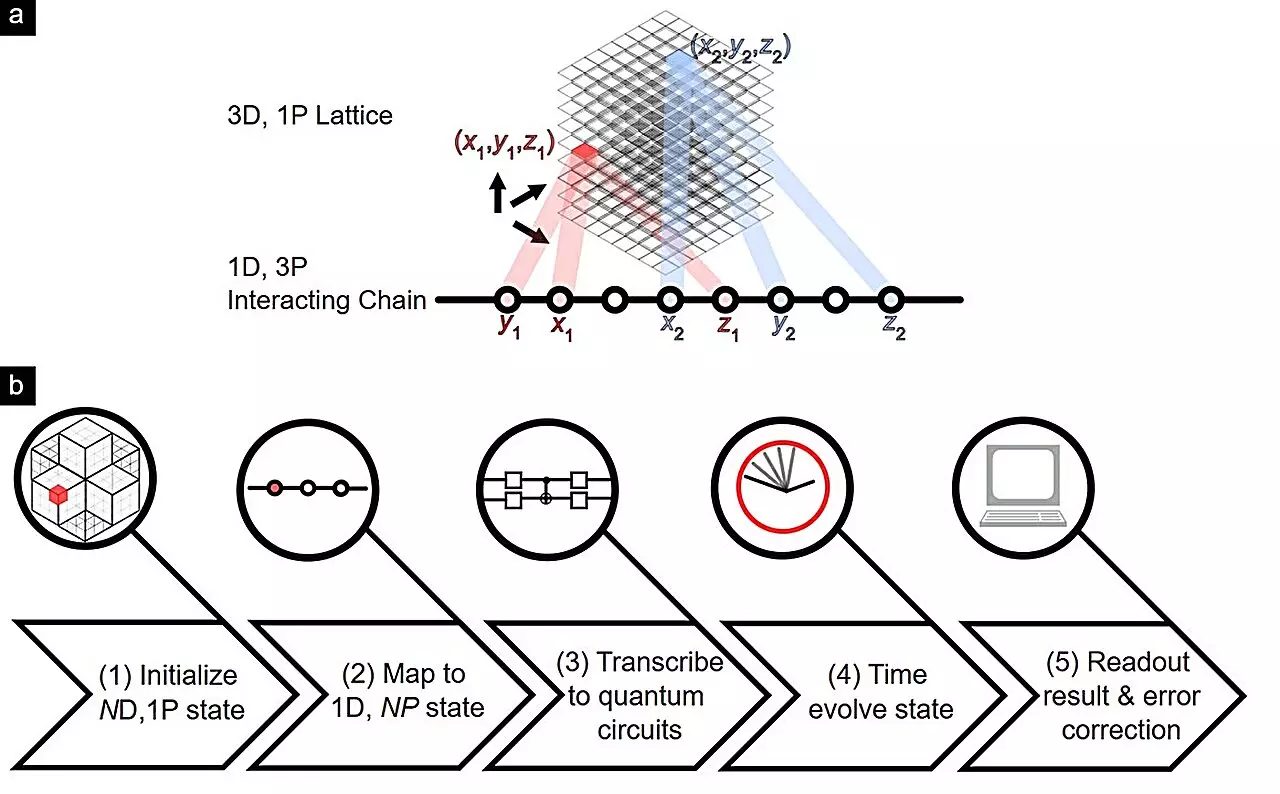Recent research conducted by the National University of Singapore (NUS) has paved the way for a deeper understanding of advanced quantum materials through the simulation of higher-order topological (HOT) lattices using digital quantum computers. These complex lattice structures offer insights into robust quantum states that have tremendous potential in various technological applications.
The study of topological insulators and their HOT counterparts has captivated the interest of physicists and engineers alike. The ability of materials to conduct electricity solely on the surface or edges while maintaining insulating interiors has sparked excitement due to their potential applications in transport and signal transmission technology. By employing many-body quantum interactions, a team of researchers led by NUS Assistant Professor Lee Ching Hua has devised a scalable method to represent large, high-dimensional HOT lattices in current digital quantum computers.
Through the utilization of quantum computer qubits, the researchers have maximized information storage capacity while minimizing resource requirements in a noise-resistant manner. This breakthrough bears significance in the simulation of advanced quantum materials, ushering in a new era of exploration in topological material engineering. The results of this groundbreaking research have been documented in the esteemed journal Nature Communications.
Pushing the Boundaries of Quantum Advantage
Professor Lee emphasized the importance of finding new applications for quantum computers that offer unique advantages beyond tailored problems. The researchers’ approach enables the examination of intricate features of topological materials on quantum computers with an unprecedented level of accuracy, even in the realm of hypothetical materials existing in higher dimensions.
Overcoming Current Limitations
Despite the challenges posed by current noisy intermediate-scale quantum (NISQ) devices, the research team has successfully measured the dynamics of topological states and protected mid-gap spectra of HOT lattices with unparalleled precision. This achievement underscores the potential of existing quantum technology to delve into uncharted territories in material engineering, suggesting a promising path towards achieving genuine quantum advantage in the near future.
The ability to simulate high-dimensional HOT lattices using digital quantum computers marks a significant milestone in quantum materials research, opening up new avenues for exploration and innovation in the field of topological states.


Leave a Reply